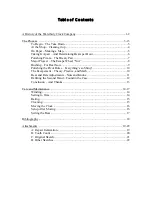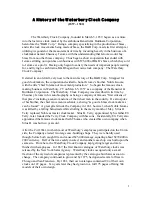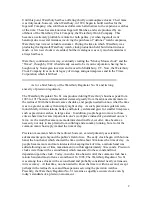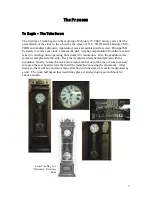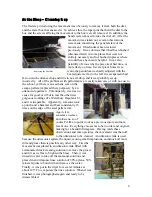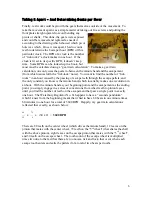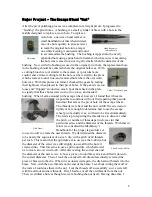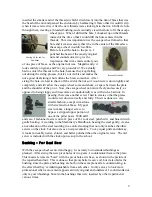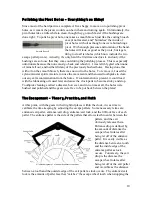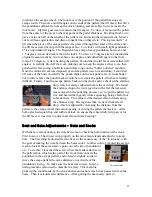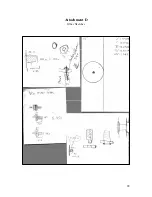
14
Care and Maintenance
This Section by:
David LaBounty, Certified Master Clockmaker AWI, Fellow BHI
Winding
This clock should be wound on a regular basis and once per week is acceptable. The
clock may run for twelve to fourteen days but it is important to avoid having the weight
settle on the bottom of the case. Damage to the escape wheel teeth could occur if all
power is off of the train (as in the weight resting on the bottom of the case) and the
pendulum continues to swing. If winding the clock before it stops is not a possibility, it
is preferable to stop the pendulum by gently touching it and bring it to rest rather than
letting the clock run down.
Great care should be taken when winding the clock to be sure none of the hands will
interfere in the winding process. This may require winding in stages to avoid the second
hand which will get in the way every 20 seconds or so. Letting the second hand come
into contact with the wind key will have the same results as letting the clock run
down…i.e. damaged escape wheel teeth.
When winding, be sure the key is completely and securely on the wind arbor before
turning the crank. Rotate the crank clockwise until the top of the weight starts to pass
behind the dial. This is fully wound and quite preferable to “cranking until it stops”
which causes the dents and dings found in the weight cap and may also cause the cable to
break. If it is necessary to pause in the winding process be careful to gently let the crank
back against a stop before letting go or removing the key.
Setting to Time
When setting the clock to time it is only possible to move the minute hand. The hour
hand is set by rotating the minute hand until the proper hour is indicated. This may be
done either forwards or backwards, being careful not to catch and drag the second hand in
the process.
Never move the hour hand or the second hand!
It is also advisable to
move the minute hand from close to the center of the dial rather than the tip of the hand.
This will avoid any chance of bending the hand due to accidentally catching the tip on
something.
Sometimes it is necessary to set up the clock so that it is synchronized to the second.
This may be accomplished by stopping the pendulum and then restarting it so the second
hand is synchronized with the other device.
One point of perfectionism is having the minute hand reach a minute mark at the same
instant the second hand reaches the twelve position.
Summary of Contents for Waterbury Regulator 61
Page 1: ...1 No 61 Restoration Log Instruction Manual Andrew LaBounty 2002...
Page 24: ...21 Attachment C Original Sketch...
Page 25: ...22 Attachment D Other Sketches...
Page 26: ...23...

